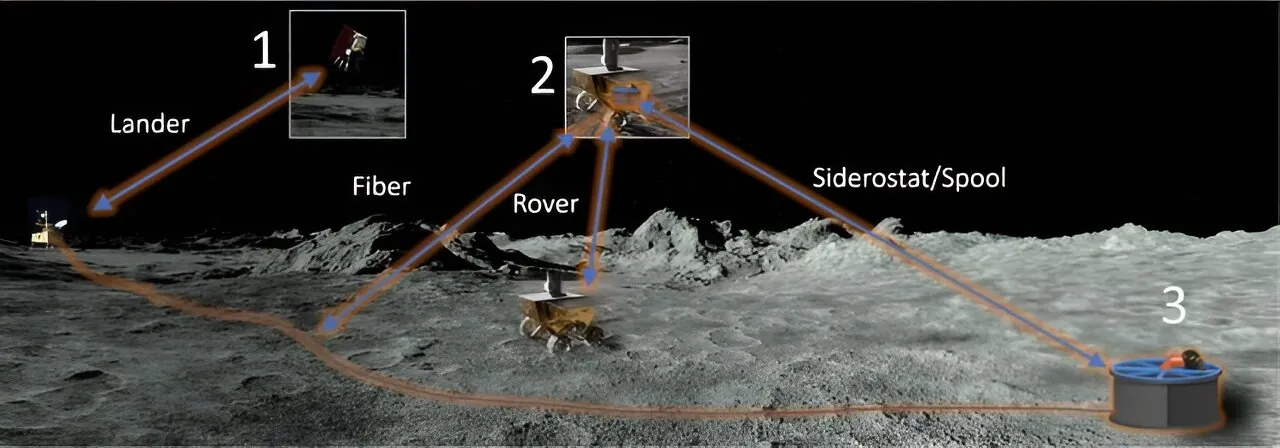
Unleashing the Secrets of the Universe: NASA’s MoonLITE Will Revolutionize Star Studies from the Lunar Surface!
2024-09-16
Introduction
Scientists are on the brink of a groundbreaking opportunity to study celestial phenomena from the moon, thanks to a revolutionary project named MoonLITE (Lunar InTerferometry Explorer). Proposed under NASA's Astrophysics Pioneers program, this innovative initiative aims to utilize optical interferometry to vastly enhance our understanding of the cosmos while overcoming the limitations posed by Earth’s turbulent atmosphere.
Optical Interferometry
Optical interferometry is a well-established scientific method where multiple telescopes work together like one colossal telescope, producing remarkably accurate data. However, observing from Earth is fraught with challenges due to atmospheric interference, leading researchers to seek solutions beyond our planet. Enter MoonLITE!
Advantages of Lunar Observations
Dr. Gerard van Belle, an astronomer from the Lowell Observatory, highlights the major advantage of conducting observations from the moon. “The chaotic nature of Earth’s atmosphere limits exposure times to less than a millisecond, severely curtailing the sensitivity of our observations,” he explains. "With MoonLITE's two-inch apertures, we could achieve sensitivity over a thousand times greater than conventional telescopes."
Scientific Goals
MoonLITE's mission focuses on three major scientific goals: studying the radii of low-mass stars (like M-dwarfs) and brown dwarfs, exploring the early stages of star formations (particularly young stellar objects), and investigating active galactic nuclei (AGN). Current ground-based observations struggle with these elusive celestial bodies, but the lunar vantage point could provide insights previously thought impossible.
Implications of Discoveries
The implications of these studies are monumental. For M-dwarfs and brown dwarfs, researchers hope to finally determine their sizes and temperatures accurately. Young stellar objects are vital as they hold clues about the development of habitable exoplanets, while unlocking the mysteries of supermassive black holes and the jets they emit could shed light on some of the universe's most enigmatic phenomena.
Community Contributions
Beyond the initial objectives, Dr. van Belle notes that MoonLITE could serve as a platform for even more scientific explorations, as 20% of its observing time will be allocated for community proposals encouraging novel ideas. "We built this into the program to foster creativity," he added.
Collaboration and Integration
An exciting aspect is MoonLITE's integration with NASA’s Commercial Lunar Payload Services (CLPS), a partnership with private companies for lunar missions. This collaborative framework not only enhances the feasibility of deploying MoonLITE on the lunar surface but also paves the way for a new era of exploration beyond Earth, supporting both human expeditions under the Artemis Program and advanced scientific missions.
Deployment Considerations
But where on the moon will MoonLITE make its observations? Dr. van Belle reveals that the design is "site agnostic," meaning it can be deployed in various locations, whether polar or equatorial, near side or far side, maximizing the opportunity for successful landings and effective scientific operations.
Budget and Cost-Effectiveness
What about costs? MoonLITE is designed to stay well within an estimated $20 million budget. For comparison, the European Southern Observatory's Very Large Telescope Interferometer reaches costs in the hundreds of millions.
Conclusion
As NASA prepares for a return to the moon with the Artemis Program, the potential insights to be gained are unprecedented. With the moon's lack of an atmosphere, scientists can collect cleaner and more accurate data, ultimately deepening our understanding of the universe and our place within it. Dr. van Belle expresses his enthusiasm, stating, "MoonLITE is exciting not just for its scientific potential but because it represents a new affordable paradigm for high-impact astronomical research." MoonLITE could herald a future where precise measurements of extrasolar planets become routine, laying the groundwork for the ambitious Habitable Worlds Observatory slated for the 2040s.
Keep an eye on MoonLITE; it’s not just another mission, but a pivotal step toward answering some of the most profound questions about our universe!

 Brasil (PT)
Brasil (PT)
 Canada (EN)
Canada (EN)
 Chile (ES)
Chile (ES)
 España (ES)
España (ES)
 France (FR)
France (FR)
 Hong Kong (EN)
Hong Kong (EN)
 Italia (IT)
Italia (IT)
 日本 (JA)
日本 (JA)
 Magyarország (HU)
Magyarország (HU)
 Norge (NO)
Norge (NO)
 Polska (PL)
Polska (PL)
 Schweiz (DE)
Schweiz (DE)
 Singapore (EN)
Singapore (EN)
 Sverige (SV)
Sverige (SV)
 Suomi (FI)
Suomi (FI)
 Türkiye (TR)
Türkiye (TR)